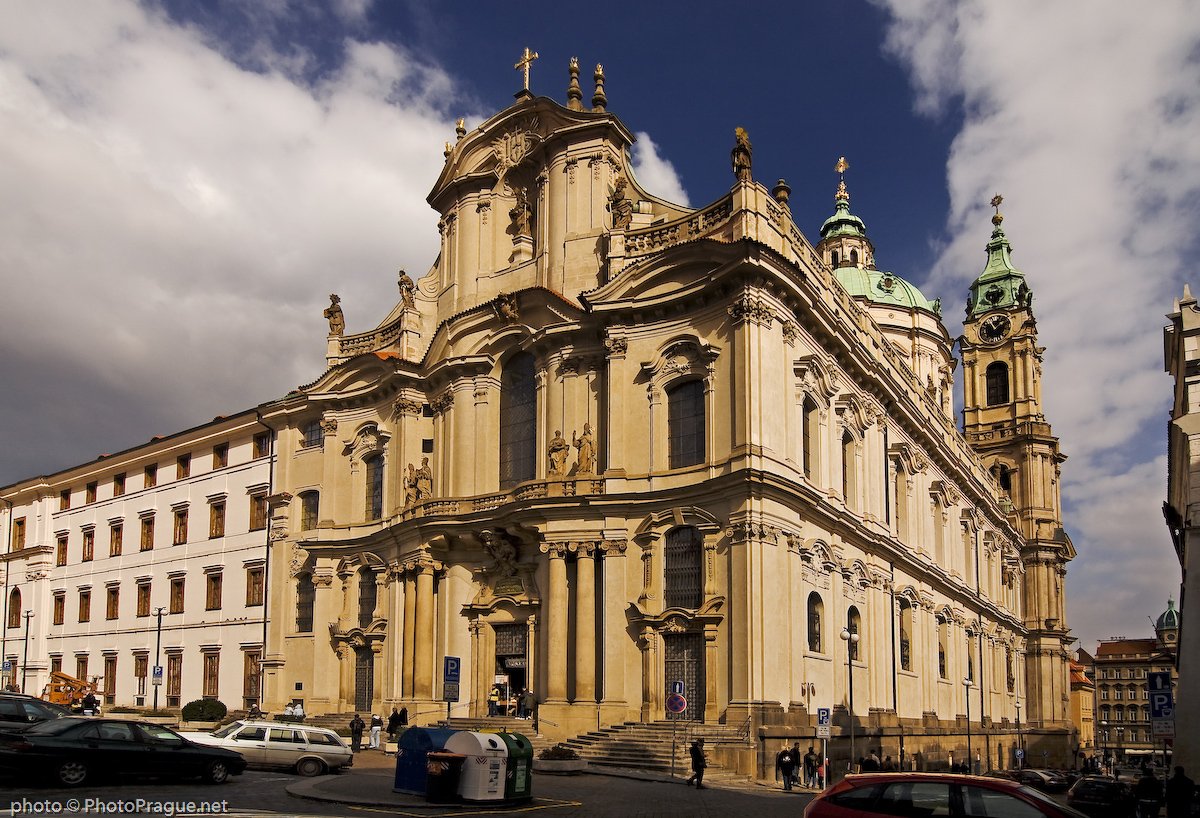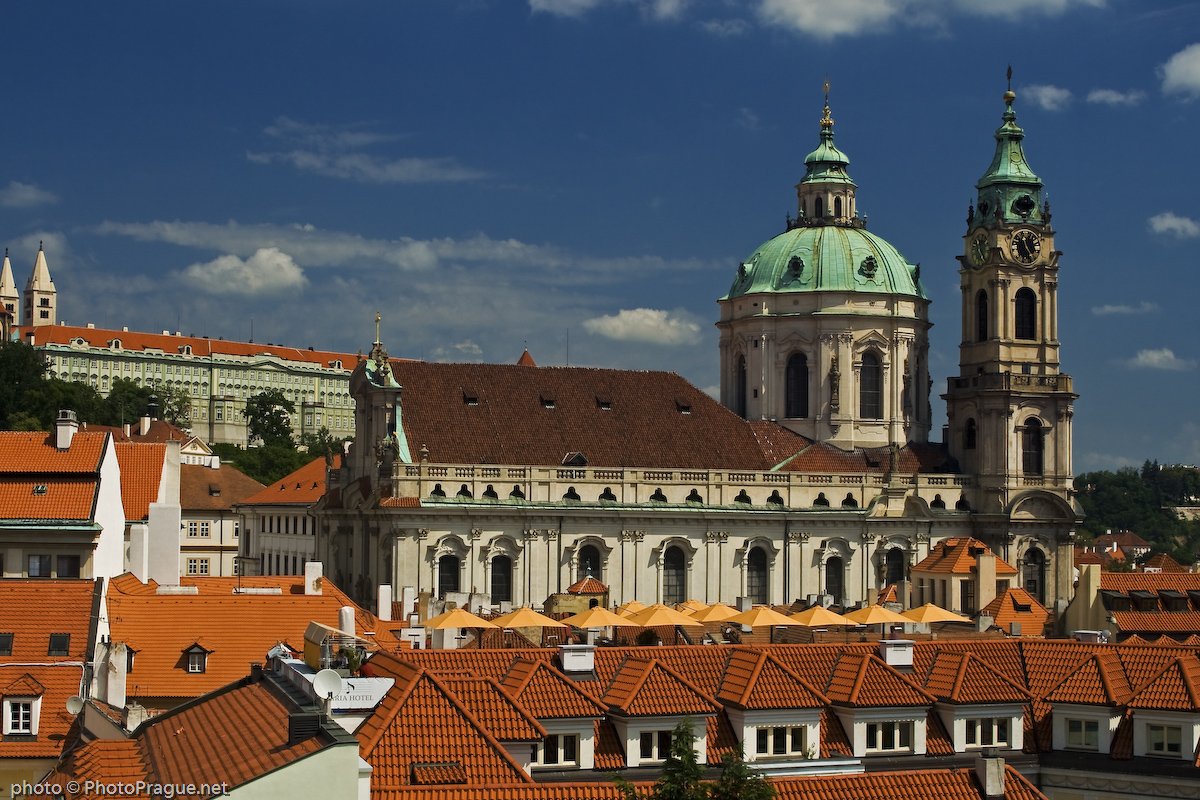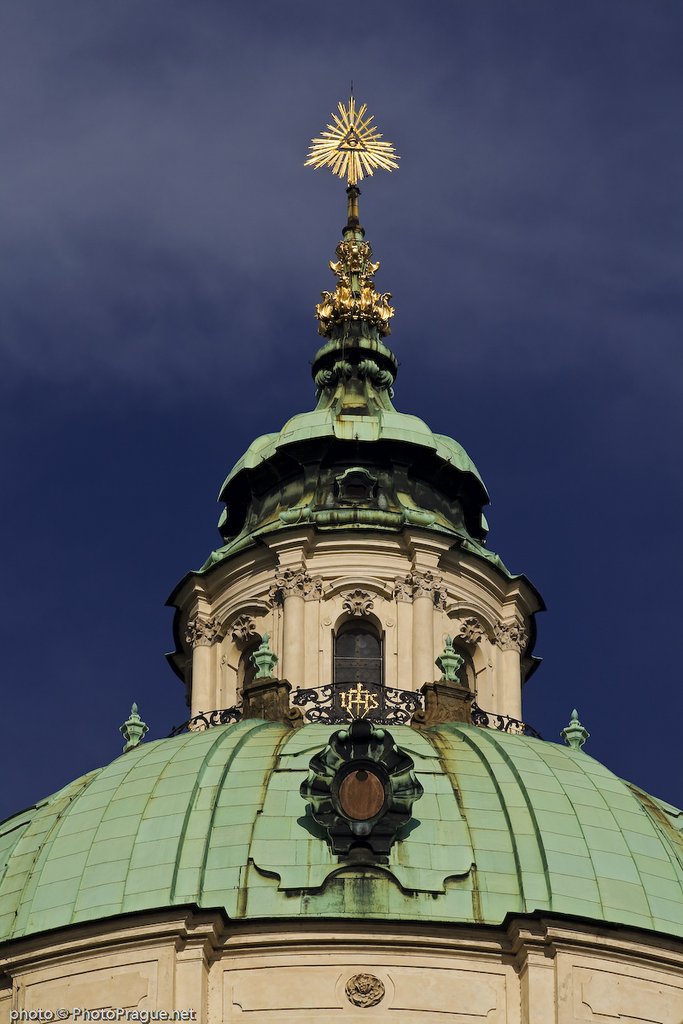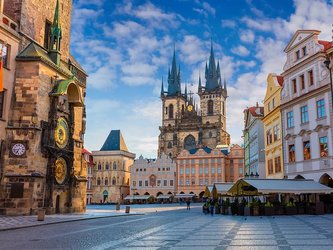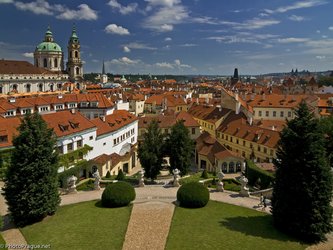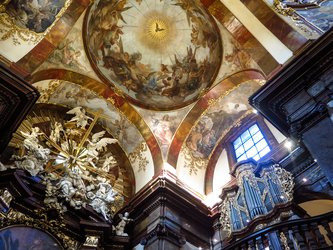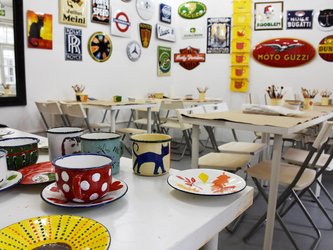A Baroque pearl in Lesser Town district...
The Church of St. Nicholas at Lesser Town is hard to miss: its cupola dominates the whole of Lesser Town, and its facade undulates like a stormy sea of rocks. The predecessor to the current building was a Gothic parish church for the merchants and burghers of the Lesser Town district. In the 17th century, however, it was acquired by the Jesuits, who decided to build their "professional house" nearby, which in essence was a place for training missionaries heading to distant places. The architecture of the new building was deliberately austere, the reason being that the Jesuits had recently been chastised by Rome for the ‘excessive’ decoration of their college at Clementinum.
In its current state, the St. Nicholas Church at Lesser Town dates from the first half of the 18th century. Its architects were the father and son duo – the Dientzenhofers, who in their time were among the most prominent architects in Central Europe. The construction was launched by Kryštof, the father, who designed the three naves of the church and the aforementioned facade. Kryštof’s basic architectural principle was movement, which is evident not only in the articulated facade, but also in the interior of the building, where the different parts merge in an architectural symphony.
Kilián Ignác Dientzenhofer, the son, was tasked with building the large dome and the bell tower that would replace the old one. This bell tower quickly took on a key function in the Lesser Town district, for it served as a watchtower for the guards monitoring fire outbreaks. The city, in its role as proprietor of the tower, thus stipulated that it be located at a corner with the best view and that it be the same height as the dome of the church. This row between the Jesuits on the one hand, and the city on the other, led to a remarkable architectural dialogue between the dome and the bell tower, making it change, depending on the angle from which it is viewed.
The interior of the St. Nicholas church is one of the most impressive examples of Baroque interior styles in Prague. The naves are dominated by grandiose frescoes by Jan Lukáš Kracker. The area under the dome is adorned with monumental statues by František Ignác Platzer. A worthwhile experience is a visit to the clerestories in the side naves, from where the details of the decoration and the whole church are most clearly visible. The highlight of the visit is undoubtedly the incredible cycle of depictions of the Passion by Karel Škréta. In this mature piece of work, the author draws on all his experience gained in the first half of the 17th century during his training in Rome.

